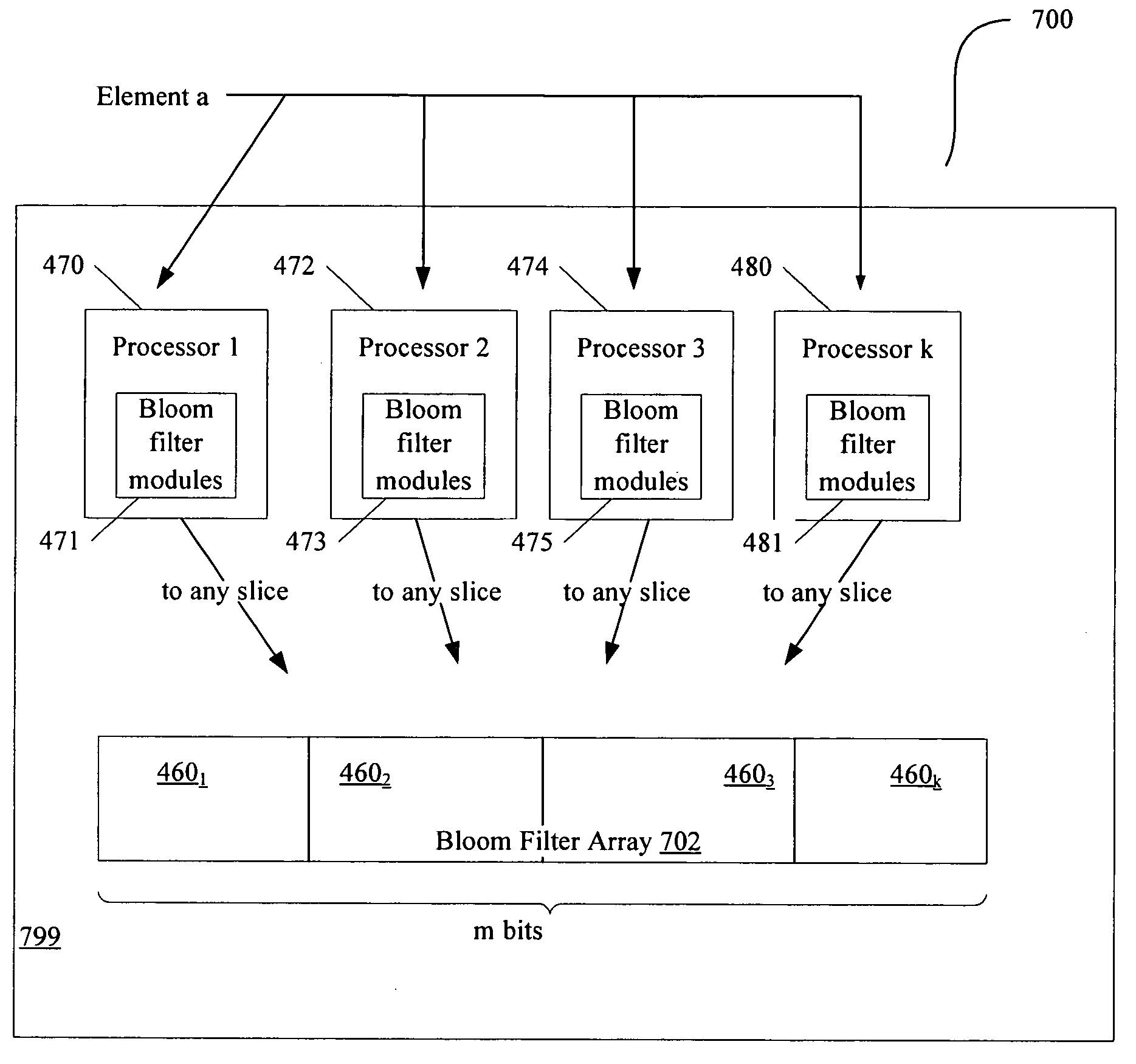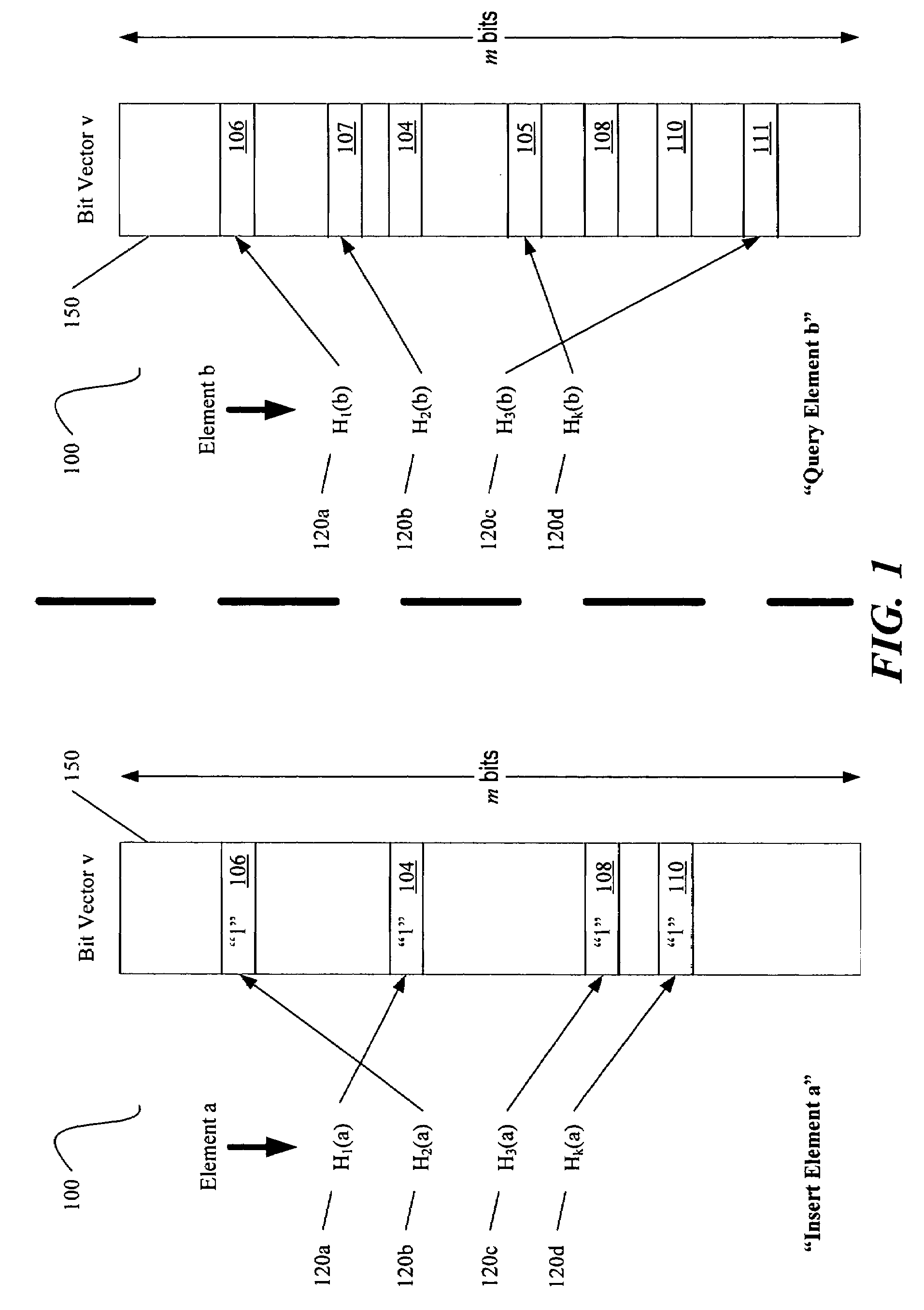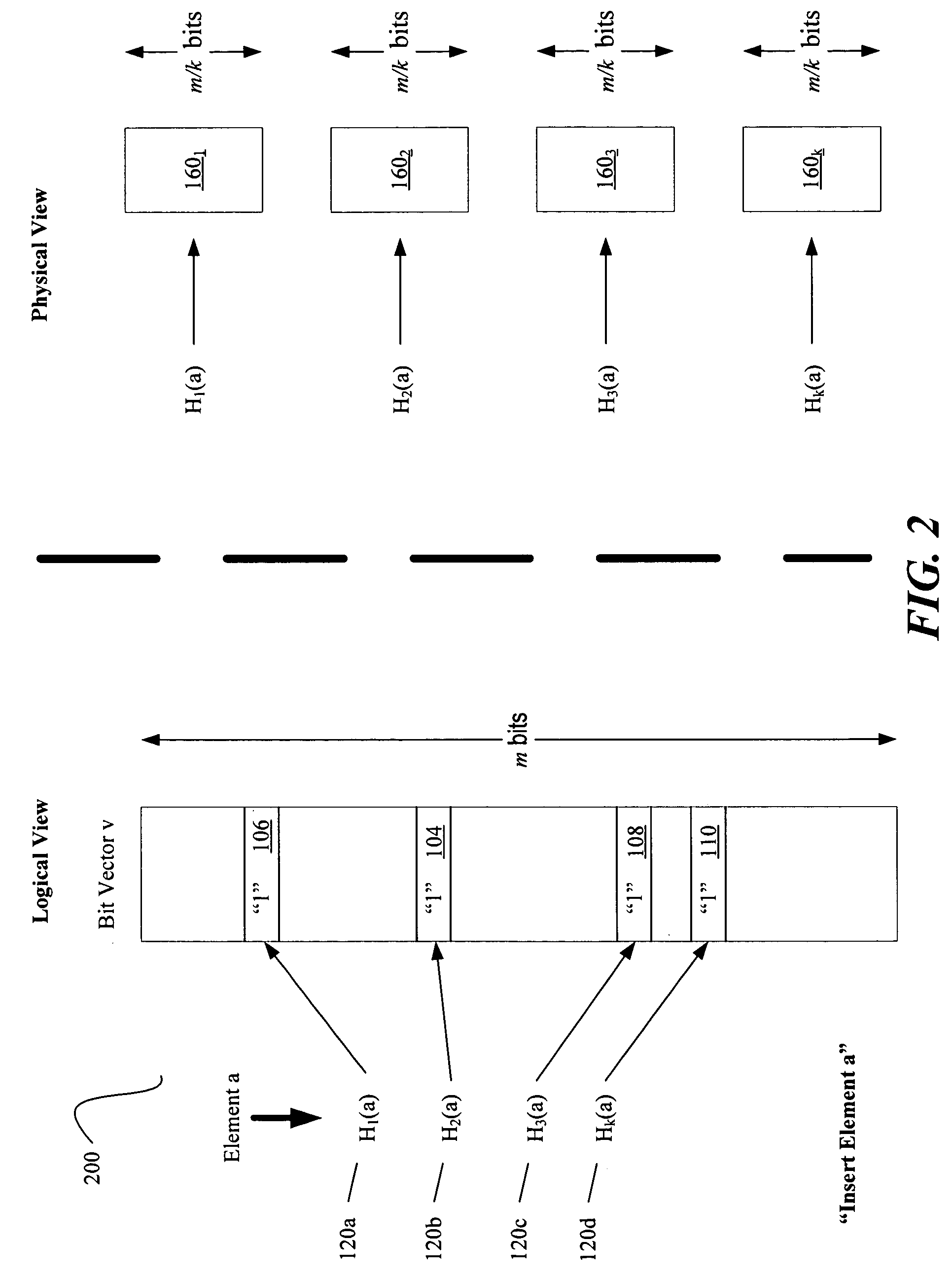Efficient bloom filter
a filter and bloom technology, applied in the field of information processing systems, can solve problems such as not being guaranteed to belong to the larg
- Summary
- Abstract
- Description
- Claims
- Application Information
AI Technical Summary
Problems solved by technology
Method used
Image
Examples
embodiment 200
[0027]FIG. 2 is a block diagram illustrating a sample embodiment of a multi-banked Bloom filter implementation that avoids the cost of using multi-ported memories. While the Bloom filter 200 shown in FIG. 2 is logically the same as that 100 shown in FIG. 1, FIG. 2 illustrates that the physical implementation of the Bloom filter 200 is different. That is, the embodiment 200 illustrated in FIG. 2 utilizes k single-ported memory banks 1601-160k rather a single k-ported memory 150 (FIG. 1).
[0028]Like the multi-ported implementation 100 illustrated in FIG. 1, the physical organization of the k-banked Bloom filter 200 illustrated in FIG. 2 allows parallel computation of the hash functions 120a-120d. However, the k-banked implementation 200 may suffer a higher false positive probability than the k-ported implementation 100 illustrated in FIG. 1. There is a clear tradeoff between m (the size of the Bloom filter) and the probability of a false positive.
[0029]The k-ported memory 150 implement...
first embodiment
[0045]FIG. 4 is a block diagram of a system 400 capable of performing disclosed techniques. The system 400 may include one or more processors 370, 380, which are coupled to a north bridge 390. The optional nature of additional processors 380 is denoted in FIG. 4 with broken lines.
[0046]First processor 370 and any other processor(s) 380 (and more specifically the cores therein) may include Bloom filter logic 402 in accordance with an embodiment of the present invention. For a first embodiment, the Bloom filter logic 402 may be hardware circuitry (see, e.g., 300 of FIG. 3). Alternatively, rather than being a hardware circuit, the Bloom filter logic 402 may be one or more software or firmware modules. At least one embodiment of a software embodiment of the Bloom filter logic disclosed herein is discussed below in connection with FIGS. 6 and 8.
[0047]The north bridge 390 may be a chipset, or a portion of a chipset. The north bridge 390 may communicate with the processor(s) 370, 380 and c...
PUM
 Login to View More
Login to View More Abstract
Description
Claims
Application Information
 Login to View More
Login to View More - R&D
- Intellectual Property
- Life Sciences
- Materials
- Tech Scout
- Unparalleled Data Quality
- Higher Quality Content
- 60% Fewer Hallucinations
Browse by: Latest US Patents, China's latest patents, Technical Efficacy Thesaurus, Application Domain, Technology Topic, Popular Technical Reports.
© 2025 PatSnap. All rights reserved.Legal|Privacy policy|Modern Slavery Act Transparency Statement|Sitemap|About US| Contact US: help@patsnap.com



